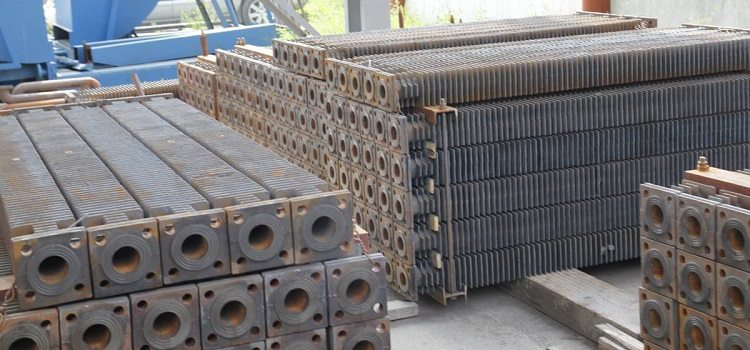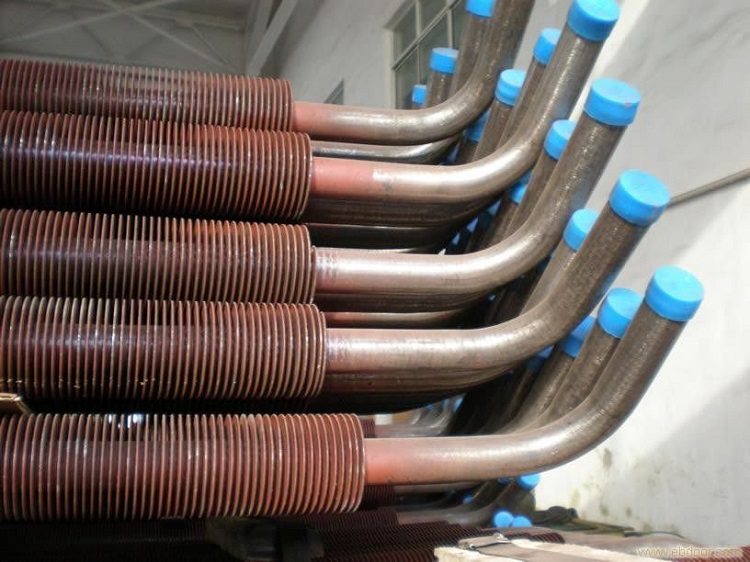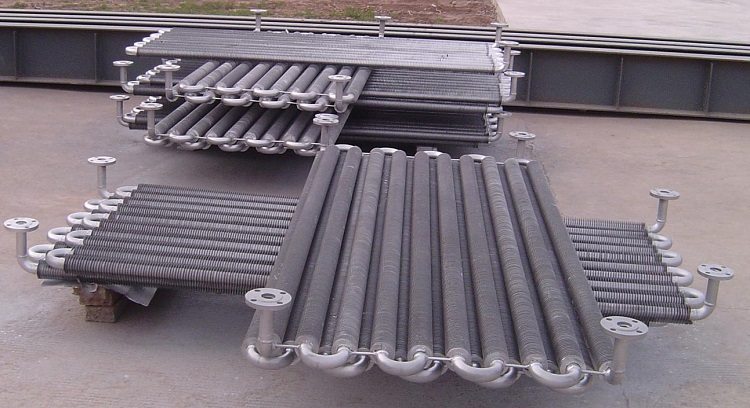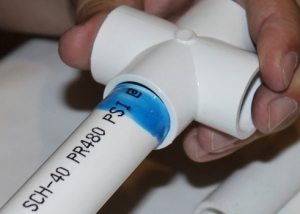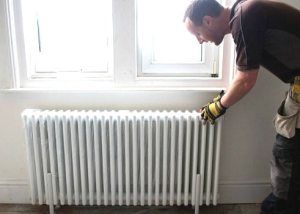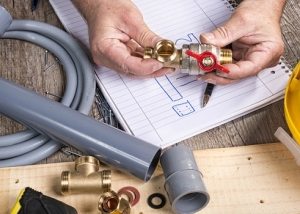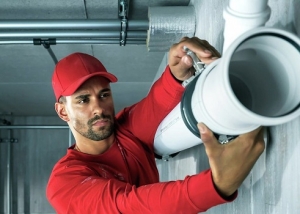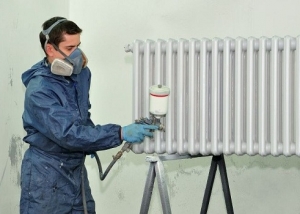Despite the appearance of a large number of pipes made of modern materials, cast-iron products still occupy high positions in the ranking of elements for heating systems. In addition to smooth-walled cast-iron pipes, products with ribbed walls are also produced. Such a variety has many advantages over relatively simple cylindrical pipes; therefore, it solves the heating problem even at large industrial facilities.
Content
Features of cast iron ribbed economizer pipe
The heating pipe for industrial economizers can be rectangular in shape and with round fins. Dimensions of the products are taken standard: the inner diameter is 70 mm, and the outer - 175 mm. Due to the differences between the outer and inner diameters, the effect of a low temperature of the pipe surface with a sufficiently hot coolant is achieved.
Economizer pipes are available in the same lengths: 2 m and 3 m each. Cast iron ribbed pipes are sold with two plugs with openings and two blind plugs. Corks with holes are left-sided and right-sided, and left-sided are marked with the designation "L".
There are certain operating conditions under which a pig-iron pipe with a ribbed surface will function as efficiently as possible:
- the highest temperature allowed for cast-iron economizer pipes is 95 degrees. In emergency cases, a short-term temperature rise of up to 150 degrees is allowed;
- constant working pressure - 0.6-1 MPa (10 atmospheres). However, cast iron finned tubes are compatible with steam boilers, the pressure of which is a maximum of 2.4 MPa;
- the outer surface of the economizer is covered with a special primer;
- when installing ribbed pipes, the required distance from the floor to the middle axis of the economizer is taken into account, which is at least 200 mm. From the surface of the side wall, the distance to the axis of the pipe is taken into account from 130 mm;
- if economizers are arranged in two rows, the distance between the axes of the radiators is maintained at 250 mm. The rows of economizers are interconnected by a special arc.
The main disadvantages of economizer pipes include a rather heavy weight, which complicates transportation, and low resistance to mechanical damage.
Important! Mounted on site, ribbed cast iron pipes should be subject to minimal external impact.
Scope of a pipe pig-iron economizer
The most widely used ribbed cast-iron pipes are used to create heat exchangers for steam boilers - economizers (registers). But registers from economizer pipes are not the best option from the point of view of hygiene, since a large amount of dust accumulates between the edges of the structure. Therefore, most often such structures can be found in industrial and warehouse facilities, in which the working personnel is located for a limited amount of time. Cast iron radiators in residential buildings are a prototype of industrial economizers.
Cylindrical pipes are not best suited as radiators, since they have insufficient internal volume with respect to surface area.
Stationary heating boilers can be non-boiling and boiling. There are also varieties with a chimney outlet used in residential buildings. Cast iron economizer pipe is used only for non-boiling stationary boilers.
Helpful advice! For optimal operation of heating furnaces in residential and industrial premises, a cast-iron starting pipe is often used. Thanks to this structural detail in the heated space, the optimum air temperature is quickly set..
In addition to part of the boiler equipment, ribbed pipes can be used as an independent element of the heating system. A ribbed pipe made of cast iron maintains the coolant temperature well and lasts several times longer than steel structures, since it is slightly susceptible to corrosion. The economizer tube is connected to other segments using end flanges.
What other varieties of cast iron pipes are there?
One of the vast areas of application of cast-iron pipes, in addition to heating systems, is the organization of water pipelines. Characteristics of cast iron pipes allow their use in water supply systems (often cold) and sewers. Cast iron pipes can easily be laid in the ground, they quietly tolerate low temperatures and soil pressure. But due to their susceptibility to corrosion, it is better to lay them in tunnels than directly in the ground.
Different types of products can be selected depending on the requirements of the pipeline.
Pressureless pipes of the Cheka. This type of cast-iron pipe has the least strength and resistance to pressure. Pressureless pipes are quite thin and brittle. In their production, simple gray cast iron with impurities of lamellar graphite is used. Such cast-iron pipes can only be successfully operated in gravity sewers with a stable low load. Nevertheless, cast-iron non-pressure pipes have an interesting advantage: they can be used repeatedly. Naturally, this is only possible with good preservation.
If it is necessary to make a connection in a pressure-free sewage system with a plastic pipeline, the pipes of the Cheka will suit best. The connection is made using rubber cuffs.
Pressure pipes VChShG. In most modern pipelines it is customary to use a pig-iron pressure pipe. These products are often found on sale under the abbreviation VChShG, which stands for "ductile iron with spherical graphite."
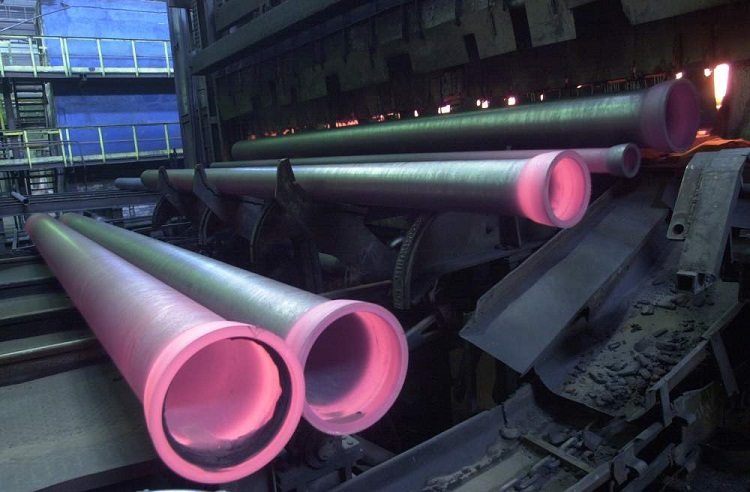
Pig-iron pipes come in several forms; their use and method of connection depend on the type and size.
Pig-iron pressure pipes have found their application in the construction of gravity sewers, pressure sewers (including in those cases when it becomes necessary to raise the sewage to a considerable height), water pipes and heating mains.
Good to know! Sometimes, VChShG pressure pipes are used as a casing when drilling wells at high depths.
In industrial sectors, ductile iron tubes are also involved. With their help, the laying of trunk oil and gas transportation systems is carried out.
Pressure bell-shaped pipes of the Czech Republic. A cast-iron bell-shaped pipe is used mainly in large water supply networks. They are available in different diameters, more often from 100 mm. The peculiarity of the material makes the PRC pipes somewhat less durable than the ductile iron, therefore their installation requires special skills. In domestic sewer systems, the use of cast iron pressure bell pipes is limited, mainly due to the difficulties in building water pipes. To extend the service life of the pipes of the Czech Republic, they are opened with varnish-bitumen compositions.
SML tubeless pipes. Socketless cast-iron pipes are produced by casting an alloy of cast iron and rosette graphite. A relatively new variation of cast-iron pipes for water supply and sewerage, a feature of which is the special coating of their epoxy substances. Sewerage systems can function for a long time with the use of socketless constructions, if their installation was carried out correctly. Unlike bell-shaped, such pipes are connected by ordinary clamps. The key role in the reliability of the connection is played by the degree of density of the put on clamp.
SML cast iron pipes can withstand both high and low temperatures. The only “contraindication” to their use is pressure sewers.
Cast iron pipes to this day remain a widely used material for the installation of heating networks, main water supply systems and sewers. Economizer pipes are an indispensable element of industrial registers, they, in fact, are a ready-made radiator. Pipes made of cast iron can also serve qualitatively in water supply and sewage systems.
